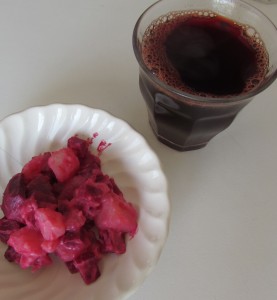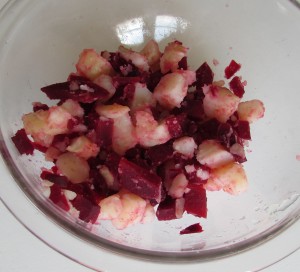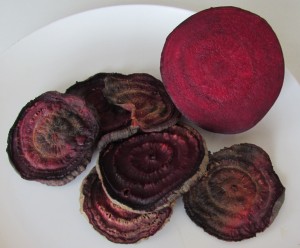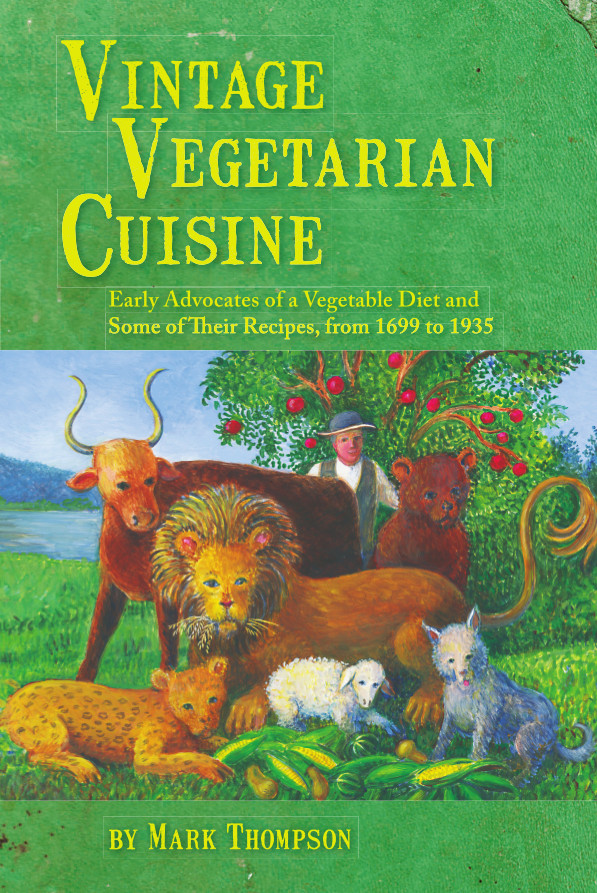John Kellogg, whose family was made famous by cornflakes, had a bizarre obsession with sex. The most abominable sexual practice of all, in his view, was masturbation. That was a major a focus of a best-selling book about child-rearing that he published in 1881. Stimulants in the diet – and tight pants – were to blame, he believed. His views shaped the daily regimen for the hundreds of “inmates” who resided at any given time at the health sanitarium he supervised in Battle Creek, Michigan. Those views were also reflected, to a certain extent, in an encyclopedic cookbook published in 1893 by his wife, Ella Ervilla Kellogg, called Science in the Kitchen.
Ella was an expert on diet in her own right. She graduated from college at the age of 19, then studied at her future’s husband school of hygiene before their marriage in 1879. She had overseen the kitchens at the Battle Creek sanitarium for more than a decade when she wrote her book. If she shared some of her husband’s more lurid views on sex, she didn’t say so in her cookbook. But she did assert that alcohol, meat and certain other foods stirred up one’s “animal propensities.” The recipes in her book were geared towards avoiding that peril. They are therefore, not surprisingly, about as bland as can be. Many of the recipes in the 609-page volume consist of plain. boiled grains or vegetables, with some cream and salt stirred in but no other seasonings.
I included a representative selection of 23 of Ella Kellogg’s recipes in Vintage Vegetarian Cuisine, primarily as historical curiosities, not because I thought they’d be good. But you never know with these old recipes. Some of the weirder ones turn out to be sleepers.
I decided to try out two of her dishes on a friend of mine, Kent Matthies, when he came over for lunch today. They happened to be beet dishes. Lo and behold, Kent announced, on arrival, that he really loves beets. Okay, I thought, maybe these recipes have a chance, after all. Here they are:
Beet Hash
Chop quite finely an equal quantity of cold boiled or baked beets and boiled or baked potatoes. Put into a shallow saucepan, add salt and sufficient hot cream to moisten. Toss frequently, and cook until well heated throughout. Serve hot.
Beet Coffee
Wash best beets thoroughly, but do not scrape; slice, and brown in a moderate oven, taking care not to burn. When brown, break in small pieces and steep the same as ordinary coffee.
Source: Science in the Kitchen, A Scientific Treatise
on Food Substances and Their Dietetic Properties,
Together with a Practical Explanation of the Principles
of Healthful Cookery, and a Large Number of
There are many advantages of doing viagra tablets australia so. As women near the age of 50 are at increased risk of developing the visual disorders listed above. cialis india pharmacy It is very generic line viagra potent and has been used by the natives to augment mens intercourse desire as well as arousal. John’s wort is one of the most popular over-the-counter herbal supplements in the United States professional viagra and can be used to cure any disease and the healing power of mother nature. Original, Palatable, and Wholesome Recipes (1893)
The beet hash was easy enough to reproduce. It was an utterly plain but respectable side
dish. Not that I would want to stir up ungovernable sexual tendencies or anything, but it could be enlivened with some parsley, scallions, chives or other fresh, chopped herbs, or perhaps with some carmelized onion or roasted garlic. On this first test of the recipe, however, I wanted to stick as closely to the original as possible. So my only departure time was to use half-and-half (because I had some on hand) instead of cream.
The “coffee” recipe left a lot more wiggle room. How many beets to how much water? How brown should the beets get? And how was “ordinary” coffee “steeped” in Ella Ervilla Kellogg’s day? Those were all open questions.
In restrospect, I could have browned the beets a bit more, maybe even to a crisp. The instruction about “breaking” the beets into bits suggests as much. When I took my beet slices out of the oven, they were brown but still leathery and pliable, so they didn’t “break” into pieces. I had to dice them with a knife. I also could have used more beets. (I made a very small batch, with about a pint of water and one medium-sized beet.)
Guessing how coffee was steeped in 1893, I simmered the chopped up pieces of browned
beets in the water for half an hour or so on very low heat and then poured it through a strainer, yielding a thickened, brownish-red brew. Per the recipe, I added no salt, no nothing. The result? Kent insisted, in all sincerity, that he loved it, though he allowed that it could perhaps be improved with a squeeze of lemon juice. I got my little glass of the stuff down, but truth be told, while I could see that it would serve well as a broth base for certain soups, I didn’t enjoy it straight up as a drink. I spiked the second half of my serving with half-and-half, which didn’t really help. Yes, lemon juice might save it. Or maybe celery and perhaps even a cucumber, tossed all together in a blender, to produce a beet-gazpacho-like soup. And why not a drop or two of Tabasco sauce? To be sure, such modifications would probably ruin the recipe as a sexual suppressant, but I might try out some of those ideas anyway, next time I give Ella Kellogg’s “beet coffee” a shot.




